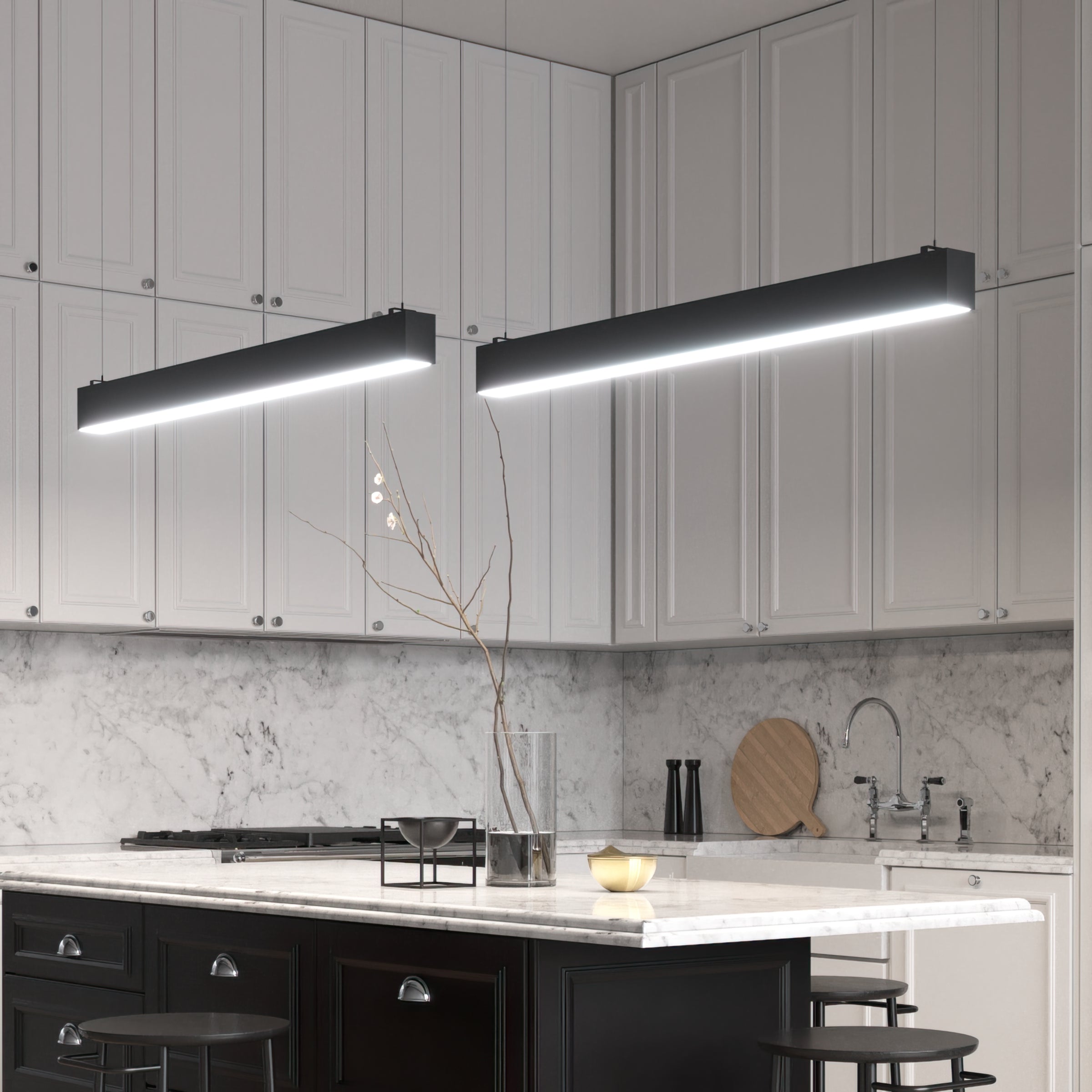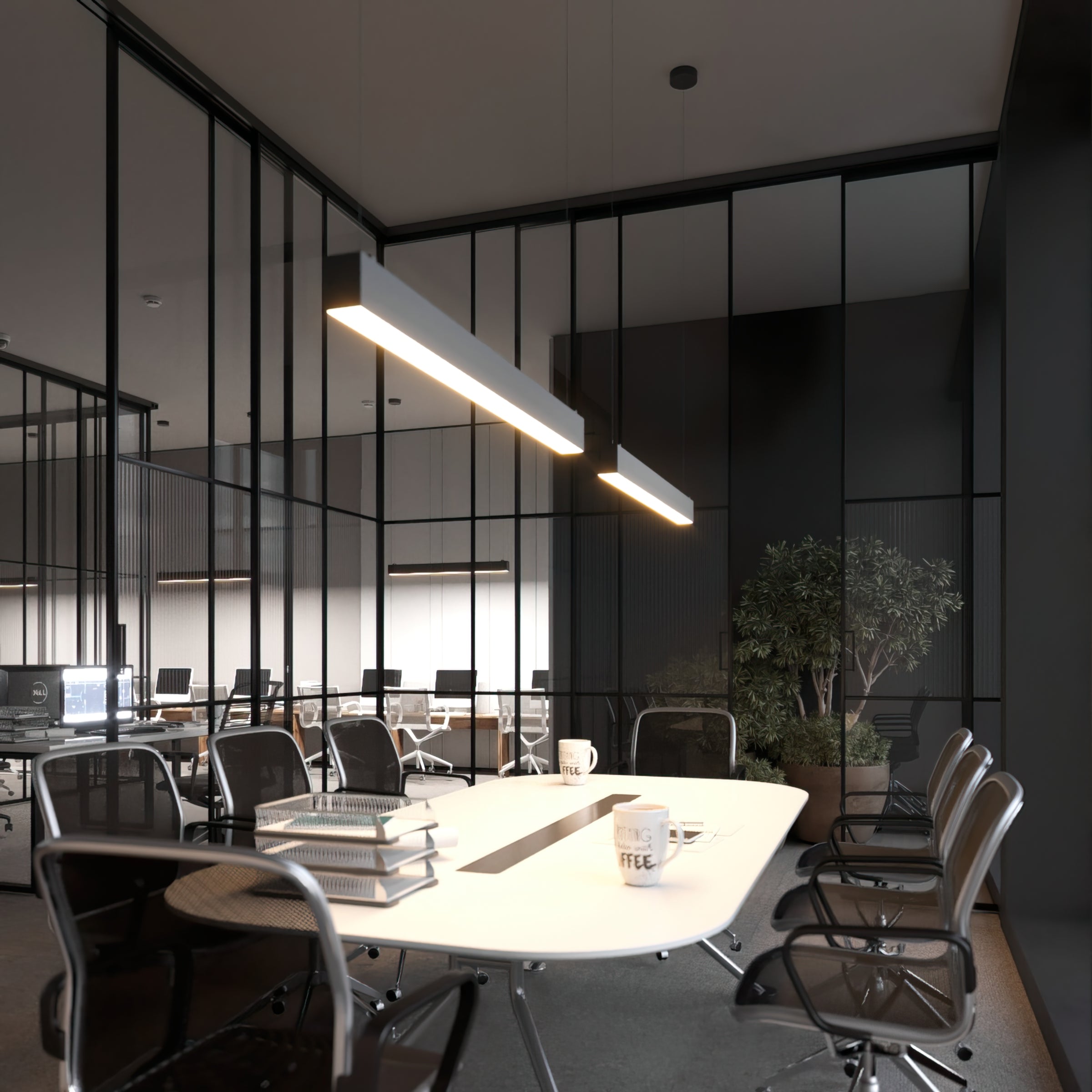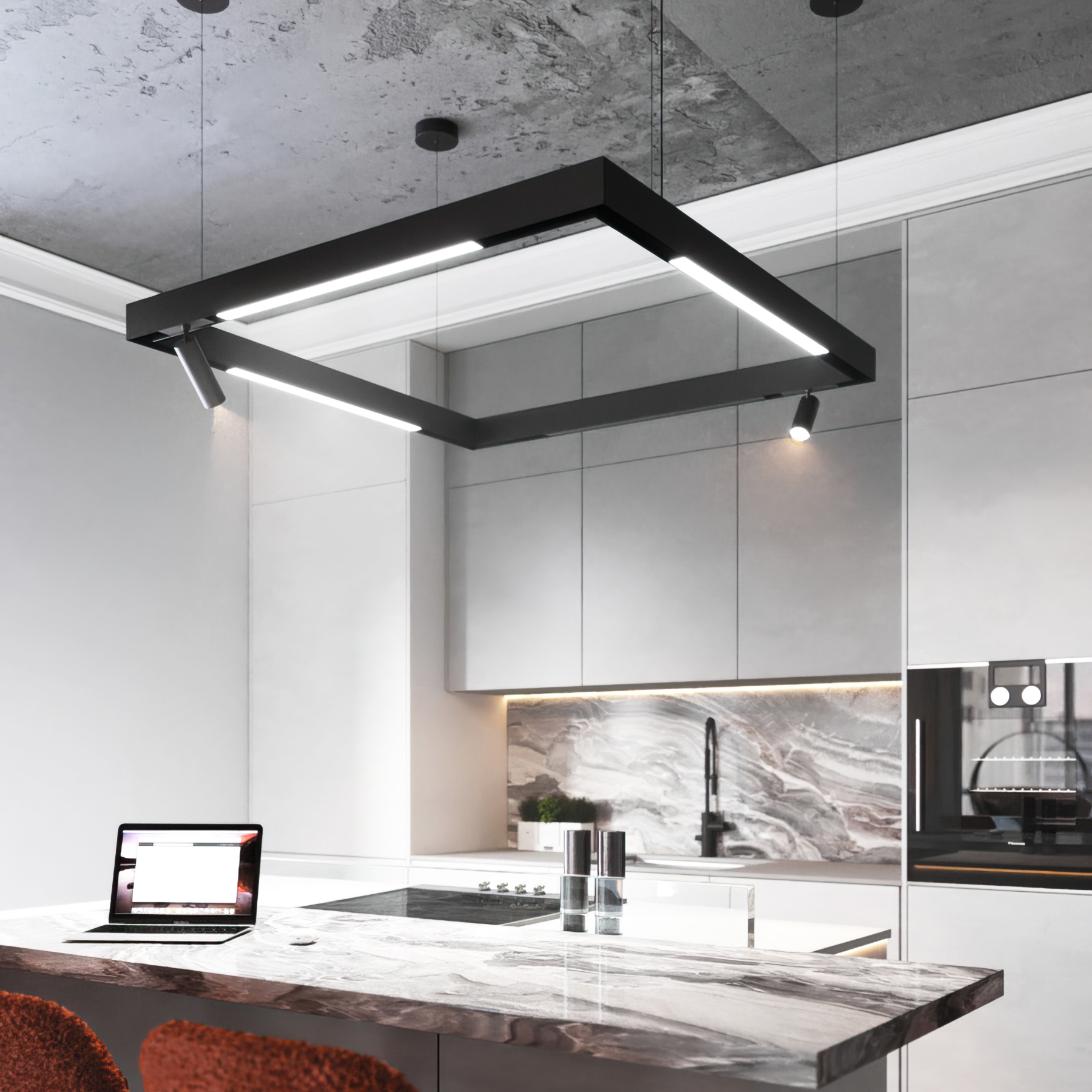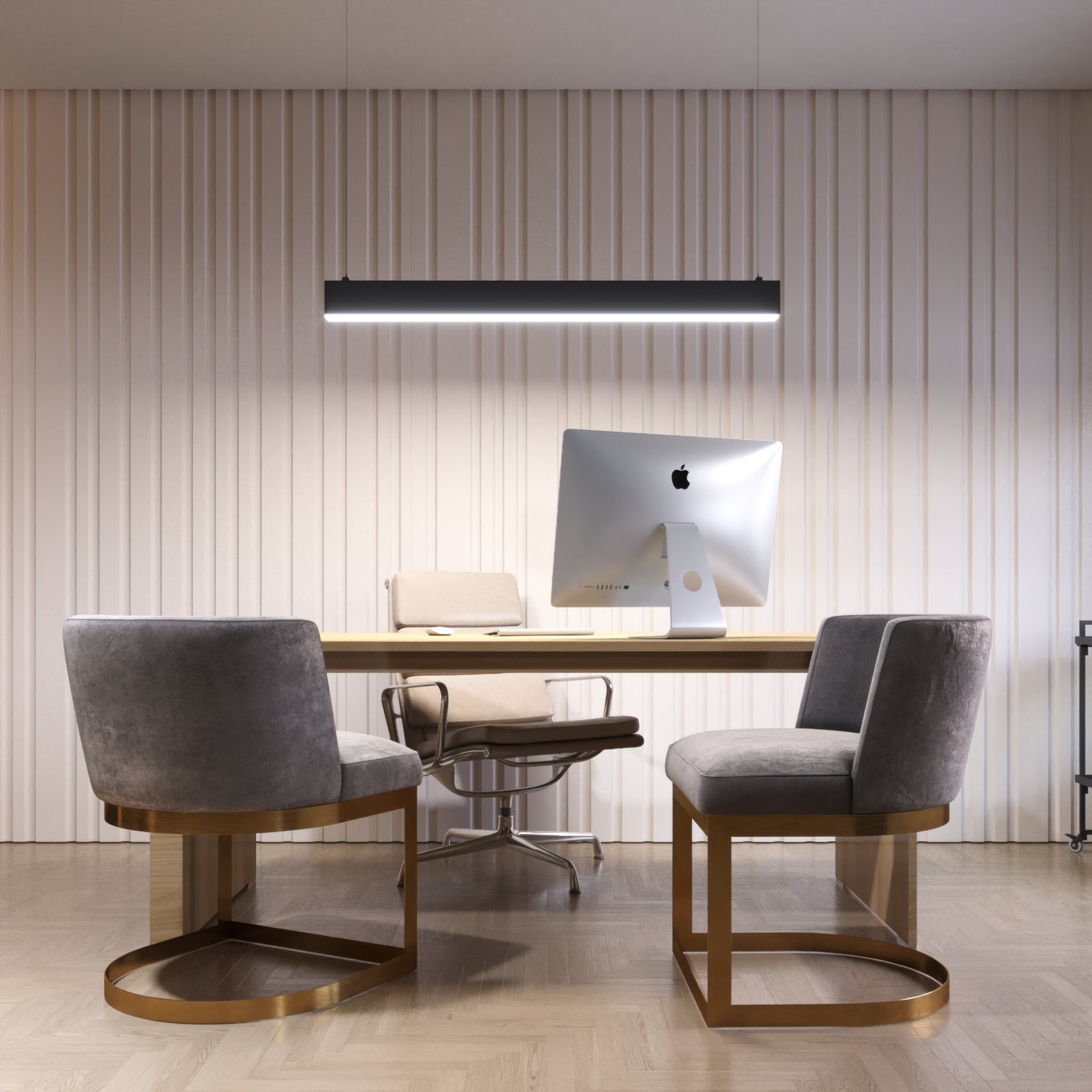Good lighting is an art that may change your house's mood, utility, and general attractiveness, not only about lighting a room. Whether constructing a new home office or remodeling your living room, knowing lighting concepts is essential for building pleasant and appealing areas that efficiently meet their intended uses.
The right lighting design can enhance your daily activities, boost productivity, and create the perfect ambiance for various occasions. On the other hand, poor lighting choices can cause eye strain, reduce energy efficiency, and make rooms feel unwelcoming or impractical. Many homeowners undervalue the influence of lighting choices on their living areas, producing rooms that fall short of their best possible performance.
This guide will explore common LED lighting mistakes homeowners make when planning their home lighting and will provide you with some home LED lighting ideas. From inadequate task lighting placement to overlooking natural light integration, these LED lighting design errors can significantly impact your living spaces' functionality and aesthetics. Understanding these typical pitfalls will help you create an energy-efficient LED lighting plan that delivers beautiful and practical home environments.
Example of using different types of LED lighting in a modern space
Neglecting Layered LED Lighting in Rooms
Not using a layered lighting technique is among the most important errors in home lighting design. Combining three basic kinds of lighting in rooms—ambient, task, and accent—layered lighting produces a well-balanced and useful setting. Every layer has a distinct use and, when used correctly, gives your spaces depth, dimension, and flexibility.
The Importance of Layered Lighting
Not using a layered lighting technique is among the most important errors in home lighting design. Combining three basic kinds of lighting—ambient, task, and accent—layered lighting produces a well-balanced and useful setting. Every layer has a distinct use and, when used correctly, gives your spaces depth, dimension, and flexibility.
Lack of Ambient Lighting
Ambient lighting sets the general light level of the room and supplies total lighting. While accent lighting highlights architectural details or artwork, task lighting concentrates on particular locations where activities occur. Working together, these layers produce a dynamic and flexible lighting system that can be changed for different times of day and different kinds of activity.
Insufficient Task Lighting
Poor task lighting can lead to headaches, eye strain, and decreased productivity.Dedicated task lighting is needed in areas including kitchen counters, reading nooks, and home office desks. LED under-cabinet lights, adjustable desk lamps, and pendant lights over dining tables depend on creating practical areas where intricate work takes place.
Overlooking Accent Lighting
Accent lighting is often overlooked when creating aesthetically pleasing lighting. Picture lights, recessed lights, and LED strips can highlight architectural details, textured walls, or artwork. This kind of lighting adds complexity and depth to a space, transforming boring, flat rooms into dynamic, layered spaces.
Choosing Inappropriate LED Lighting Fixtures
Achieving both functional and aesthetic goals in your home depends on making informed lighting fixture choices. Incorrect fixture selection could damage a space's use and upset its visual balance. Knowing which fixtures would be suitable for various spaces guarantees that your lighting improves rather than compromises the style of your house.
Aesthetic and harmonious LED lighting in modern home spaces
Fixture Size and Scale Mistakes
Putting in fixtures that are out of proportion to the size of the space is a frequent mistake. While a little pendant light may seem lost in a large foyer, a huge chandelier can overpower a small dining room. Think about the dimensions and ceiling height of the room to ascertain the appropriate scale. Generally speaking, add the length and width of the room in feet; this total in inches should about match the diameter of your main light source.
Style Mismatch with Interior Design
Lighting elements should complement the architectural style and interior design concept of your house. While traditional interiors suit well with more ornate fixtures, including classic elements, modern spaces usually benefit from sleek, simple fixtures with clean lines and metallic finishes. While modern homes could highlight geometric shapes and artistic designs, industrial-style areas can include exposed lighting and metal surfaces.
Incorrect LED Light Color Temperature
Creating the right ambiance and functionality in your home requires an understanding of color temperature. Measuring in Kelvin (K), LED lights range in color temperature from warm to cool tones. Choosing the incorrect color temperature can greatly affect the practical use as well as the visual attractiveness of your rooms.
Choosing the Wrong Color Temperature for Each Room
Diverse rooms have diverse uses and demand particular color temperatures to complement their purposes. Perfect for bedrooms and living areas, warm light (between 2700 and 3000K) fosters a comfortable, soothing environment. Perfect for task-oriented environments like kitchens and home offices, cool light (4000–5000K) increases awareness. Failing to match color temperature to the room’s function can disrupt sleep patterns, reduce productivity, and create an uncomfortable environment.
Mixing Different Color Temperatures
Using different color temperatures inside the same space is another often made error. This can visually startlingly produce an imbalanced, chaotic look. In open-concept environments where many functional areas converge, this is especially troublesome. Stick to consistent color temperatures in related areas to preserve visual harmony, or design deliberate transitions between several lighting zones that complement rather than clash with each other.
Poor Fixture Placement
We asked Sergei Andreichenko, the specialist at LED Lights Direct.
Visit his LinkedIn profile for more insights.
Just as important as their choice and specification is where LED lighting fixtures are placed. Even the best quality lighting systems might be greatly less effective if poor siting causes insufficient illumination, visual discomfort, or limited functioning of your rooms. Achieving the best lighting outcomes and building comfortable, well-lit surroundings depend on knowing appropriate fixture placement.
Installing Fixtures Too High or Too Low
Mounting fixtures at improper heights is one of the most often occurring placement errors. Hanging pendant lights or chandeliers too high results in their visual impact being lost and insufficient task lighting. On the other hand, fixtures that are too low-mounted could cause glare and compromise sightlines within the space. Pendant lights usually dangle 28 to 34 inches above the table surface in dining rooms. Standard 8-foot ceilings in normal living areas need chandeliers to be hung with the bottom at least 7 feet from the floor. Add three inches of height for each extra foot of ceiling height for taller ceilings.
Uneven Distribution of Light Fixtures
Dependency on a single central light source to cover a whole room is another crucial mistake. This method generates dark corners and strong shadows, therefore distorting the lighting. Plan instead for several light sources positioned deliberately over the area. For even coverage in bigger spaces, think about employing a grid design for recessed lights and spacing them 6–8 feet apart. Wall-mounted fixtures or floor lamps will help to remove shadows and provide balanced lighting all around the space when augmenting overhead lighting.
Plan fixture placement in light of the layout, furniture arrangement, and main activities of the room. While general regions gain from more diffuse light dispersion, task areas should be illuminated with great concentration. Recall that correct fixture placement not only improves functioning but also helps your home design to be generally appealing.
Ignoring Natural Light Integration
Often disregarded or underused in house lighting design, natural light is a key component. Appropriate incorporation of natural light can lower energy usage, enhance mood, and make living environment more pleasant. Developing a well-balanced lighting plan that improves the utility and appearance of your house depends on knowing how best to use and control natural light.
Combination of LED accent, general and natural daylight in a living space
Blocking Windows with Heavy Curtains or Furniture
One common mistake is hiding natural light sources with bulky window coverings or improperly positioned furniture. Closed heavy drapes or blinds throughout the day stop valuable daylight from getting into your room. In the same vein, putting big furniture items right in front of windows would drastically cut the interior natural light entering your home. Rather, choose lightweight, movable window treatments like translucent curtains or layered solutions that let you regulate light levels and preserve privacy. Think about how furniture should be positioned strategically to maximize the window view and let natural light flood the entire room.
Not Considering Daylight When Placing Artificial Lights
Ignoring natural light patterns during artificial lighting design is another major error. The direction windows face, and their position determines how sunlight enters and flows across your room all day. While north-facing rooms could need additional lighting support, south-facing rooms usually get strong, direct sunshine and may require less artificial lighting during daylight hours. To vary artificial lighting settings as natural light varies over the day, think about adding dimmer switches. Position task lighting away from windows in spaces with lots of natural light to reduce glare and produce balanced lighting all around.
Lack of Lighting Control Options
The application of appropriate control systems is among the most disregarded features of contemporary lighting design. Having the correct lighting fixtures is only one aspect; the capacity to properly manage these lamps will significantly affect the energy economy and functioning of your house. When properly used, advanced lighting controls provide flexibility, simplicity, and major energy savings.
Failing to Install Dimmers for Flexibility
Many homeowners undervalue the significance of dimmer switches for their lighting setup. Dimmers give exact control over light levels, thereby enabling you to change the brightness to suit different activities, times of day, or desired mood. In multifunctional areas like living rooms, dining rooms, and bedrooms where lighting needs change throughout the day, they are very helpful. A reasonably priced addition to your lighting system, installing dimmers can also improve bulb life and lower energy consumption.
Not Using Smart Lighting Systems
Ignoring smart lighting controls in today's linked world results in a major loss of convenience and energy economy. Smart lighting solutions let you design personalized lighting scenarios for various activities, set automated schedules, and remotely manage your lights. These systems can learn from your preferences to maximize lighting patterns, combine with other home automation tools, change automatically depending on occupancy or time of day, and even match. Controlling several lighting zones through a single interface not only increases convenience but also guarantees that lights are only used when and where necessary, therefore helping to save energy and improve house management.
Ignoring Energy Efficiency
A key component of house lighting design, energy efficiency is sometimes disregarded in favour of aesthetic concerns. Bad lighting decisions could result in too high energy bills and more environmental damage. A sustainable and reasonably priced home lighting system depends on an awareness of and use for energy-efficient lighting options.
Using Outdated or Inefficient Fixtures
Modern LED lighting technology has clear benefits over more conventional lighting sources. Although they provide better light quality and longer lifespans than conventional bulbs, LED fixtures use up to 75% less energy. One common mistake is installing too many recessed lights, which can create a spotlight effect and waste energy. Additionally, by producing less heat, these fixtures help to lower summer cooling expenditures. Although some LED bulbs last up to 25 times longer than conventional incandescent bulbs, the initial outlay in LED lighting usually pays for itself through lower energy bills and lower maintenance costs.
Over-Lighting a Space
Apart from being wasteful, if you make your LED lights too bright, it can make your surroundings unpleasant. Overlighting with LEDs can produce intense glare, visual discomfort, and unnecessary energy expenditure. The secret is to figure out, depending on the size and purpose of every room, the suitable level of LED light required. Generally speaking, living areas should utilize 20 lumens per square foot, and task-oriented areas 30 to 40 lumens per square foot. Using exact calculations and carefully weighing lighting needs will help you design well-lit areas without squandering energy on overly bright LED lighting.
Expert Insight: How to Plan an Effective LED Lighting Layout
We asked Sergei Andreichenko, the specialist at LED Lights Direct.
With over ten years of experience in LED implementation, I have found that effective lighting design begins with a thorough analysis of your space. The secret is to walk slowly through every area, weighing aesthetic aspirations with functional needs.
Create a thorough floor layout first, marking all architectural details, furniture arrangement, and natural light sources. Think about the main purposes of the room and spot places needing task lighting. Aim for 50 footcandles of lighting for reading spaces; usually, ordinary ambient lighting calls for 20 to 30 footcandles.
Essential Pre-Purchase Checklist:
-
Measure room dimensions and ceiling height
-
Map electrical outlet locations and existing junction boxes
-
Calculate required lumens based on room size and function
-
Determine the appropriate color temperature for the space's purpose
-
Consider dimming requirements and control system compatibility
-
Verify fixture IP ratings for moisture-prone areas
Remember that a well-planned lighting layout should be flexible enough to accommodate different activities while maintaining energy efficiency and visual comfort.






